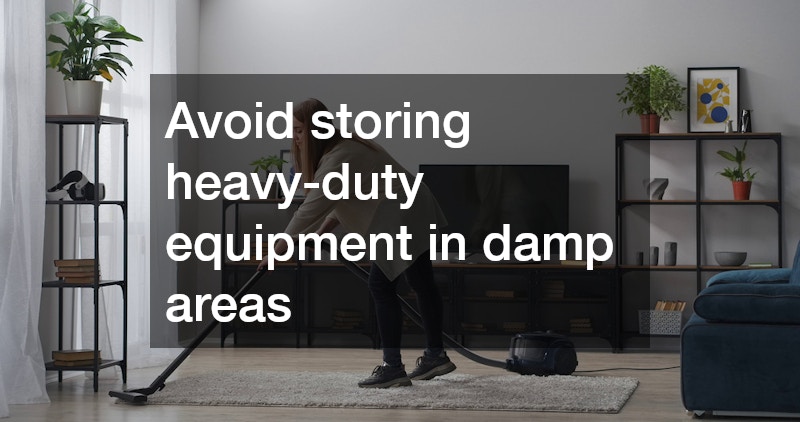The cleanliness of your home greatly depends on the care and maintenance you give to your cleaning equipment. In this article, we will explore essential tips and techniques to ensure your cleaning tools not only last longer but also perform optimally, helping you achieve a sparkling clean home every time. Discover the most frequently asked questions about cleaning equipment care, and gain insights to enhance your cleaning routine effectively.
How Do I Properly Maintain a Vacuum Cleaner?
Regular maintenance of your vacuum cleaner is crucial to ensure efficient performance. First, routinely check and replace the vacuum’s filter to maintain optimal airflow and suction. This simple action can prevent dust and dirt from escaping back into your home. Depending on the model, the filter may need cleaning or replacing every few months, especially in high-use environments.
In addition to filter maintenance, empty the vacuum bag or canister frequently. When a vacuum is overfilled, it works harder, which can lead to reduced suction and strain on the motor. To achieve best results, consider emptying the bag or canister after each use. Keep an eye on the hose for blockages that can disrupt airflow; a quick inspection can save you from further maintenance down the line.
Lastly, regularly check the belt and brush roll for wear and tear. The belt connects the motor to the brush, ensuring it spins effectively. A worn-out belt can impede the vacuum’s cleaning efficiency. Clean hair and debris from the brush roll to ensure the vacuum picks up dirt effectively, keeping your home pristine.
What Are the Best Practices for Caring for Mops and Buckets?
Mops and buckets are essential tools in maintaining a clean home, and they require specific care to prolong their life. After each use, rinse out the mop head to remove dirt and debris, and allow it to dry completely to prevent mold and odor buildup. Keeping the mop head clean is essential for ensuring it picks up dirt effectively during the next use.
Consider regularly soaking the mop head in warm water and a mild detergent to thoroughly clean it. This will help eliminate any lingering bacteria and odors. Be cautious with the cleaning agents you use, as harsher chemicals can degrade the mop’s fibers, reducing its effectiveness and lifespan.
For the bucket, avoid leaving water sitting in it for extended periods, as this can foster mold and mildew. Thoroughly rinse and dry the bucket after each use. Storing the bucket upside down can also prevent water accumulation, ensuring that your cleaning equipment remains in top condition and ready for use whenever needed.
How Can I Prolong the Life of My Broom and Dustpan?
Brooms and dustpans are fundamental tools in daily cleaning, but often are not given adequate care. After each use, remove any debris from the broom bristles to maintain their effectiveness. A broom with clogged bristles won’t pick up dirt efficiently, making your cleaning routine less effective and more labor-intensive.
When it comes to storage, make sure to keep the broom bristles elevated and off the ground. Storing a broom with its bristles flat can cause them to bend or lose shape, leading to ineffective sweeping. A proper broom holder can help maintain the integrity of the bristles, ensuring they are always ready for use.
Lastly, periodically clean your dustpan as well. A dirty dustpan can transfer grime back onto your floors, counteracting your hard work. To clean it, simply wipe it down with a disinfectant after each use, ensuring it remains in optimal condition and preventing the spread of germs throughout your living space.
What Should I Know About Storing Cleaning Equipment?
Proper storage of cleaning equipment can significantly affect its longevity and effectiveness. Choose a dry, designated spot where all your cleaning tools can be easily accessible yet organized. Consider using storage solutions like shelves, hooks, or bins to keep everything neatly in place. This helps prevent damage and clutter, making your cleaning routine more efficient.
Avoid storing heavy-duty equipment in damp areas like the garage or basement, where moisture can lead to rust or mold. Additionally, stacking items haphazardly can cause accidents or damage. By keeping heavier items at lower levels and lighter tools higher up, you maximize accessibility while minimizing the risk of accidents.
Finally, ensure that all equipment is clean before storage. Dirt left on tools can lead to odors and degradation over time. To further protect your cleaning tools, regularly inspect the storage area for any signs of leaks or water damage. Properly stored equipment not only lasts longer but also keeps your home cleaner and healthier.
Proper care and maintenance of your cleaning equipment are vital in ensuring a hygienic and efficient cleaning routine. By implementing the tips and techniques discussed in this article, your tools will perform better, last longer, and ensure that your home remains sparkling clean. Regular cleaning, proper storage, and timely maintenance go a long way in preserving the quality and effectiveness of your cleaning equipment.



